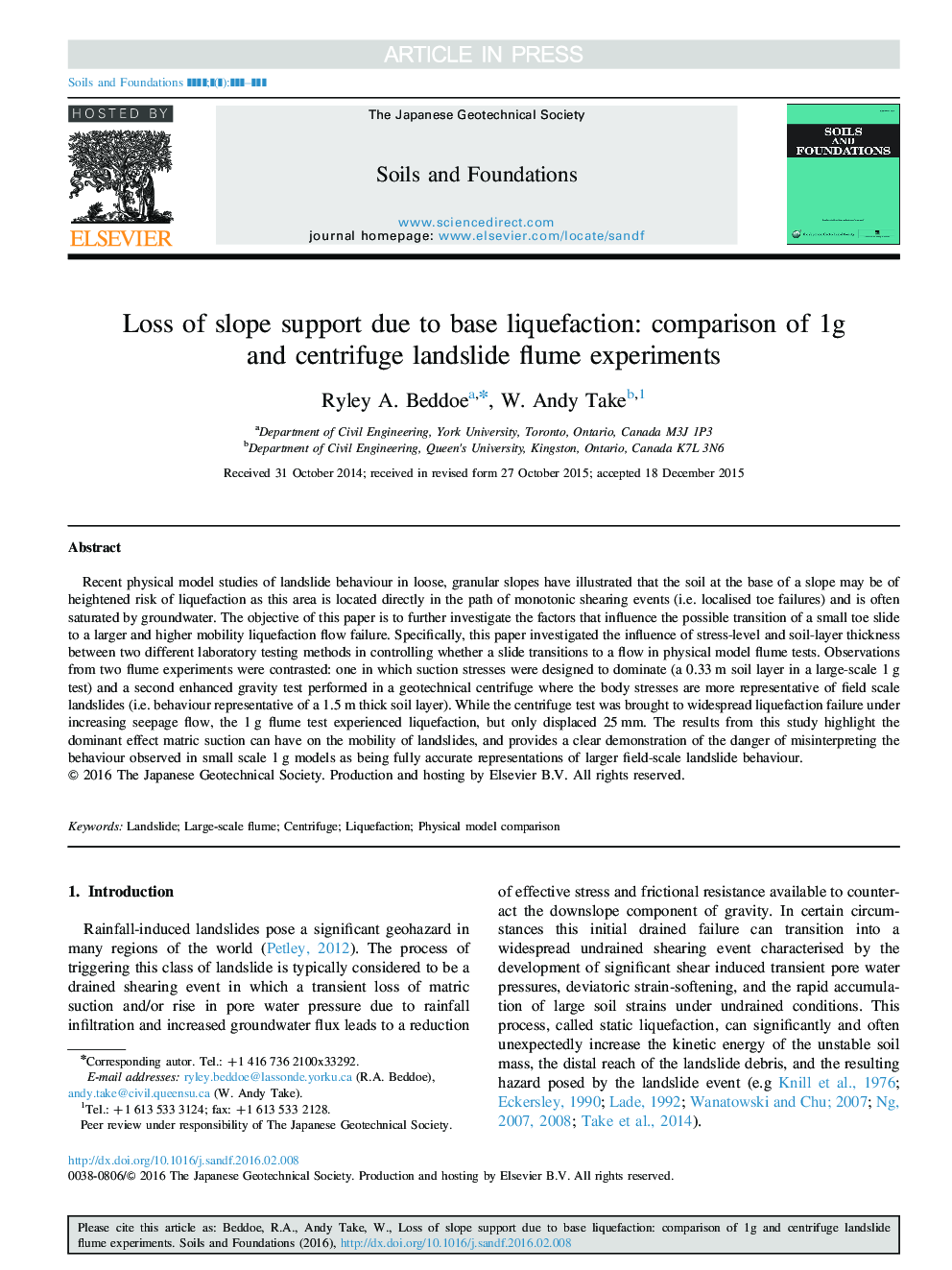| Article ID | Journal | Published Year | Pages | File Type |
|---|---|---|---|---|
| 307033 | Soils and Foundations | 2016 | 14 Pages |
Abstract
Recent physical model studies of landslide behaviour in loose, granular slopes have illustrated that the soil at the base of a slope may be of heightened risk of liquefaction as this area is located directly in the path of monotonic shearing events (i.e. localised toe failures) and is often saturated by groundwater. The objective of this paper is to further investigate the factors that influence the possible transition of a small toe slide to a larger and higher mobility liquefaction flow failure. Specifically, this paper investigated the influence of stress-level and soil-layer thickness between two different laboratory testing methods in controlling whether a slide transitions to a flow in physical model flume tests. Observations from two flume experiments were contrasted: one in which suction stresses were designed to dominate (a 0.33Â m soil layer in a large-scale 1Â g test) and a second enhanced gravity test performed in a geotechnical centrifuge where the body stresses are more representative of field scale landslides (i.e. behaviour representative of a 1.5Â m thick soil layer). While the centrifuge test was brought to widespread liquefaction failure under increasing seepage flow, the 1Â g flume test experienced liquefaction, but only displaced 25Â mm. The results from this study highlight the dominant effect matric suction can have on the mobility of landslides, and provides a clear demonstration of the danger of misinterpreting the behaviour observed in small scale 1Â g models as being fully accurate representations of larger field-scale landslide behaviour.
Keywords
Related Topics
Physical Sciences and Engineering
Earth and Planetary Sciences
Geotechnical Engineering and Engineering Geology
Authors
Ryley A. Beddoe, W. Andy Take,
